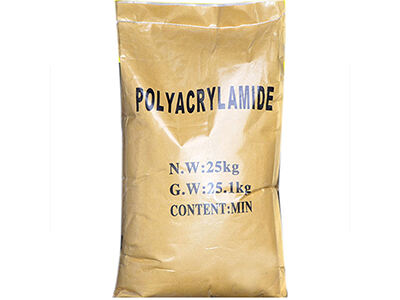Fil-qasam problemattiku tat-trattament tal-ilma tal-kaxxa industrijali, il-għażla tal-flukulanti hija fattur importanti għall-effiċjenza u l-effettività tat-trattament. Minn kemm disponibbli, il-poljakrilamidi anjoniċi polyacrylamide (APAM) sar ikandidat ideali, minħabba r-riżultati notevoli tiegħu fis-separazzjoni tas-solidi sospiżi mill-ilma tal-kaxxa. Il-funzjonalità tiegħu f'kapacitajiet differenti ta’ funzjonament u karattristiċi tal-ilma ħolqu lilu b’din importanza essenzjali fil-kaxxi. Dan il-karġa se jistudja l-fatturi li wasslu għall-pertinenza kontinwa tal-poljakrilamidi anjoniċi, speċjalment fir-rigward tal-pawer tal-piż molekulari u l-ottimizzazzjoni tas-solubilità.
L-Impatt tal-Piż Molekulari fuq l-Effiċjenza tal-Ġlid tal-Poliakrilamidi Anjoniku
Il-piżu molekulari huwa wieħed mill-ifatturi l-iktar influwenti li jaffettwaw l-effikaċità tal-anjoniċ poljakrilamid fit-trattament tal-ilma sporcu. It-tul tal-kateni tal-APAM jiġi ddeterminat mis-piżu molekulari tiegħu u allura l-abbiltà tiegħu biex jagħmel qaxxa, li hija proċess kritiku fil-flokulazzjoni. Il-polimeri b’piżu molekulari ogħla għandhom katni polimeriċi twal, u allura jipprovdu netwerk twil biex jagħmlu qaxxa bejn il-partikoli suspenti fl-ilma sporcu. Din l-abbiltà tiżdied il-kompost tas-sedimenti kbir u stabbli li jistgħu faċilment jitneħħew jew ifiltraw mill-ilma.
Min-naħa l-oħra, piżu molekulari ikbar ta’ APAM ifisser li l-katni itwal huma iqsar u dan possibbilment ma jkunx effettiv meta tkun meħtieġa forza ogħla tat-qaxxa bejn il-partikoli. Madankollu, anke formi b’piżu molekulari baxx jistgħu għandhom użu f’proċessi fejn hemm bżonn għal konċentrazzjoni iktar baxxa ta’ solidi suspenti jew sedimentazzjoni iktar malajr.
Il-ħarir li jkollhom il-fren ta' l-ilma tal-quddiem magħmul minn proprjetajiet partikolati varjati, bħal fl-estrattivisti u fil-proċessar tal-minerali, ġeneralment ifpreferu APAM b’pes molekulari għoli peress li huwa aħjar fl-aggregazzjoni ta’ partikoli fini. Fid-dak il-frattemp, pjanijiet tat-trattament b’profili ta’ skart relattivament stabili jistgħu jkunu sodisfatti b’polimeri b’pes molekulari iktar baxx li jkunu iktar ekonomiċi.
Bill-kunsiderazzjoni tal-pes molekulari xieraq skont in-natura tal-ilma tal-quddiem, il-ħarir jistgħu jimmażżimaw il-proċess ta’ flokkulazzjoni, li jimmimizza l-użu ta’ kimiċi mingħajr ma jikkompromettu jew anke jtejjeb il-proċess tat-trattament.
Kif il-Poliver ta’ Poljakrilamid Jioptimizza s-Solubilità fis-Sistemi ta’ Ilma b’Turbidità Għolja
Alta turbidità fl-ambjent industrijali titlob l-għaġeb tas-solubilità tal-flokkulanti sabiħ tiddistribwixxi uniformement fit-tul tal-ilma tal-quddiem. Il-poliakrilamidi anjoniċi jeżistu f’formi diversi, fejn il-forma powdru hija partikolarment beneficija għas-sistemi b’turbidità għolja.
Is-solubiltà tal-powdered polyacryl amide hija ogħla minn dawn il-likwidi. Il-natura partikulata fina tagħhom tippermetti wkoll dispersjoni ħutma meta tkun fil-kuntatt ma’ ilma li tikkawża reazzjoni ta’ idrolisi malajr li tibbassar is-solubiltà. Id-distribuzzjoni tal-flokkulant tista’ tintlagħab b’modo aktar uniformi u fi żmien limitat fejn kollha l-korpo tal-ilma jista’ jittratta għalhekk jippermetti flokkulazzjoni effettiva tal-ilma anke f’situżjonijiet diffiċli.
Ir-rapport kbir bejn l-arja u l-volum tal-forma powder ikkawża ż-żieda fis-veloċità tal-proċess ta’ dissoluzzjoni u dan huwa importanti ħafna fit-trattamenti industriali veloċi fejn iż-żmien huwa essenzjali. Dawn il-proprjetajiet jagħmlu l-APAM powdered utili f’varjetà ta’ sitwazzjonijiet, bħal runoff agriku kontaminat mis-sedimenti sa ols emulsiġinji fl-effluents tal-refinaras.
Hemm ukoll, l-APAM b’pulver jagħti l-possibbiltà tal-kontroll iktar preċiż tas-soġġetti tal-dosifikazzjoni u tnaqqis tal-iskart u telesa aħjar. Din iflessibbiltà tagħmel l-APAM b’pulver strument utli fil-kaxxa tal-instrumenti ta’ esperti fimmaniġġjar tal-ilma sporcu.
 EN
EN
 AR
AR BG
BG HR
HR NL
NL FI
FI FR
FR DE
DE IT
IT KO
KO NO
NO PL
PL PT
PT RU
RU ES
ES SV
SV TL
TL ID
ID LV
LV SL
SL UK
UK VI
VI SQ
SQ HU
HU MT
MT TH
TH TR
TR FA
FA MS
MS BE
BE HY
HY AZ
AZ KA
KA BN
BN CEB
CEB






